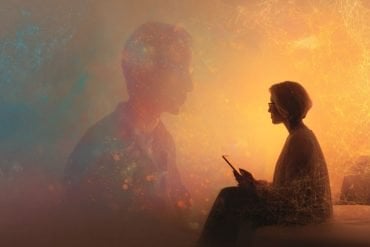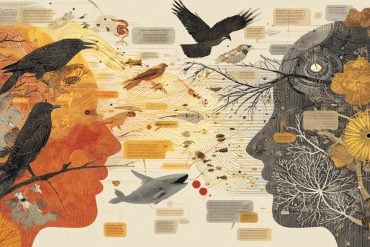Summary: A novel study suggests that silence can indeed be ‘heard.’ Philosophers and psychologists, using auditory illusions, demonstrated how silence distorts our perception of time, much like sounds do.
The study indicates that the brain perceives and processes silence in a manner similar to sounds. The research establishes a novel method to study the perception of absence, broadening the scope for future exploration in the realm of sensory perception.
Key Facts:
- Using auditory illusions, the researchers demonstrated that moments of silence can distort our perception of time, similar to sounds.
- The study concluded that silence is ‘perceived’ in a similar way to sounds, suggesting that we can ‘hear’ silence.
- The researchers plan to extend their investigation into the perception of absence, including visual disappearances and the possibility of hearing silences not preceded by sound.
Source: Johns Hopkins University
Silence might not be deafening, but it’s something that literally can be heard, concludes a team of philosophers and psychologists who used auditory illusions to reveal how moments of silence distort people’s perception of time.
The findings address the debate of whether people can hear more than sounds, which has puzzled philosophers for centuries.
“We typically think of our sense of hearing as being concerned with sounds. But silence, whatever it is, is not a sound—it’s the absence of sound,” said lead author Rui Zhe Goh, a Johns Hopkins University graduate student in philosophy and psychology.
“Surprisingly, what our work suggests is that nothing is also something you can hear.”
The research is published in Proceedings of the National Academy of Sciences.
The team adapted well-known auditory illusions to create versions in which the sounds of the original illusions were replaced by moments of silence. For example, one illusion made a sound seem much longer than it really was.
In the team’s new silence-based illusion, an equivalent moment of silence also seemed longer than it really was.
The fact that these silence-based illusions produced exactly the same results as their sound-based counterparts suggests that people hear silence just as they hear sounds, the researchers said.
“Philosophers have long debated whether silence is something we can literally perceive, but there hasn’t been a scientific study aimed directly at this question,” said Chaz Firestone, an assistant professor of psychological and brain sciences who directs the Johns Hopkins Perception & Mind Laboratory.
“Our approach was to ask whether our brains treat silences the way they treat sounds. If you can get the same illusions with silences as you get with sounds, then that may be evidence that we literally hear silence after all.”
Like optical illusions that trick what people see, auditory illusions can make people hear periods of time as being longer or shorter than they actually are.
One example is known as the one-is-more illusion, where one long beep seems longer than two short consecutive beeps even when the two sequences are equally long.
In tests involving 1,000 participants, the team swapped the sounds in the one-is-more illusion with moments of silence, reworking the auditory illusion into what they dubbed the one-silence-is-more illusion.
They found the same results: People thought one long moment of silence was longer than two short moments of silence. Other silence illusions yielded the same outcomes as sound illusions.
Participants were asked to listen to soundscapes that simulated the din of busy restaurants, markets, and train stations. They then listened for periods within those audio tracks when all sound stopped abruptly, creating brief silences.
The idea wasn’t simply that these silences made people experience illusions, the researchers said. It was that the same illusions that scientists thought could only be triggered with sounds worked just as well when the sounds were replaced by silences.
“There’s at least one thing that we hear that isn’t a sound, and that’s the silence that happens when sounds go away,” said co-author Ian Phillips, a Bloomberg Distinguished Professor of Philosophy and Psychological and Brain Sciences.
“The kinds of illusions and effects that look like they are unique to the auditory processing of a sound, we also get them with silences, suggesting we really do hear absences of sound too.”
The findings establish a new way to study the perception of absence, the team said.
The researchers plan to keep exploring the extent to which people hear silence, including whether we hear silences that are not preceded by sound. They also plan to investigate visual disappearances and other examples of things people can perceive as being absent.
About this auditory neuroscience research news
Author: Roberto Molar Candanosa
Source: Johns Hopkins University
Contact: Roberto Molar Candanosa – Johns Hopkins University
Image: The image is credited to Neuroscience News
Original Research: Open access.
“The perception of silence” by Chaz Firestone et al. PNAS
Abstract
The perception of silence
Do we only hear sounds? Or can we also hear silence? These questions are the subject of a centuries-old philosophical debate between two camps: the perceptual view (we literally hear silence), and the cognitive view (we only judge or infer silence).
Here, we take an empirical approach to resolve this theoretical controversy.
We show that silences can “substitute” for sounds in event-based auditory illusions. Seven experiments introduce three “silence illusions,” adapted from perceptual illusions previously thought to arise only with sounds.
In all cases, silences elicited temporal distortions perfectly analogous to their sound-based counterparts, suggesting that auditory processing treats moments of silence the way it treats sounds. Silence is truly perceived, not merely inferred.








